Palazzo Farnese: Gem of the Roman Renaissance is a tour worth waiting a decade
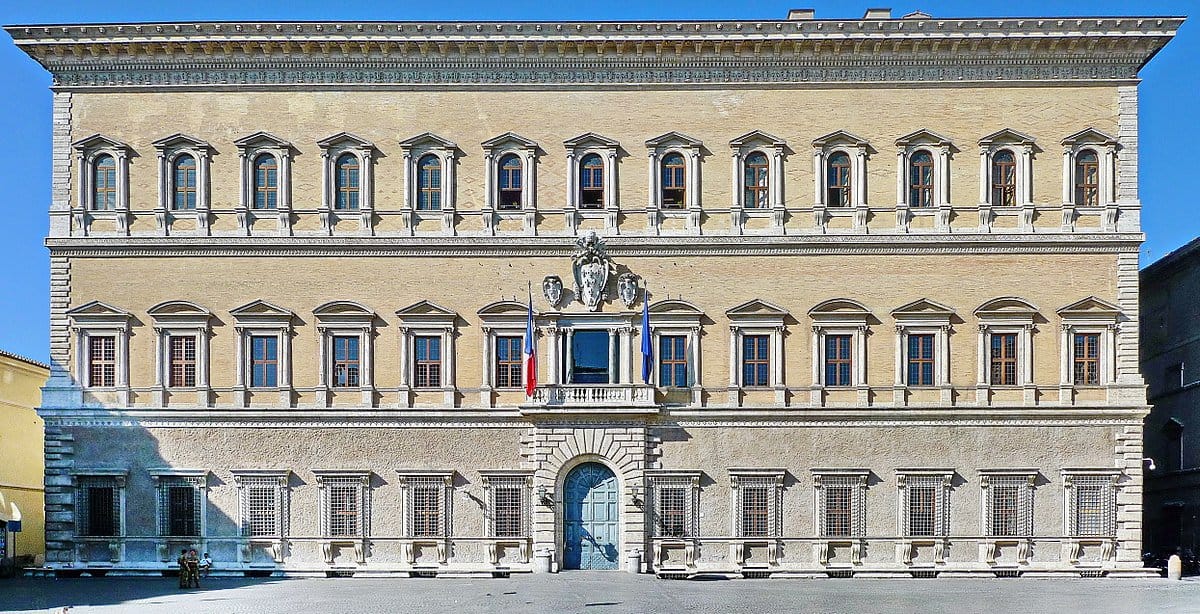
Palazzo Farnese always mocked me.
For more than 10 years, the home of the French Embassy thumbed its marble nose at me, not unlike how many Americans view the French in general. Palazzo Farnese is considered by some to be the most beautiful Renaissance Palace in Rome. It features frescoes that are considered the equal of the Sistine Chapel by Michelangelo who helped build the palace.
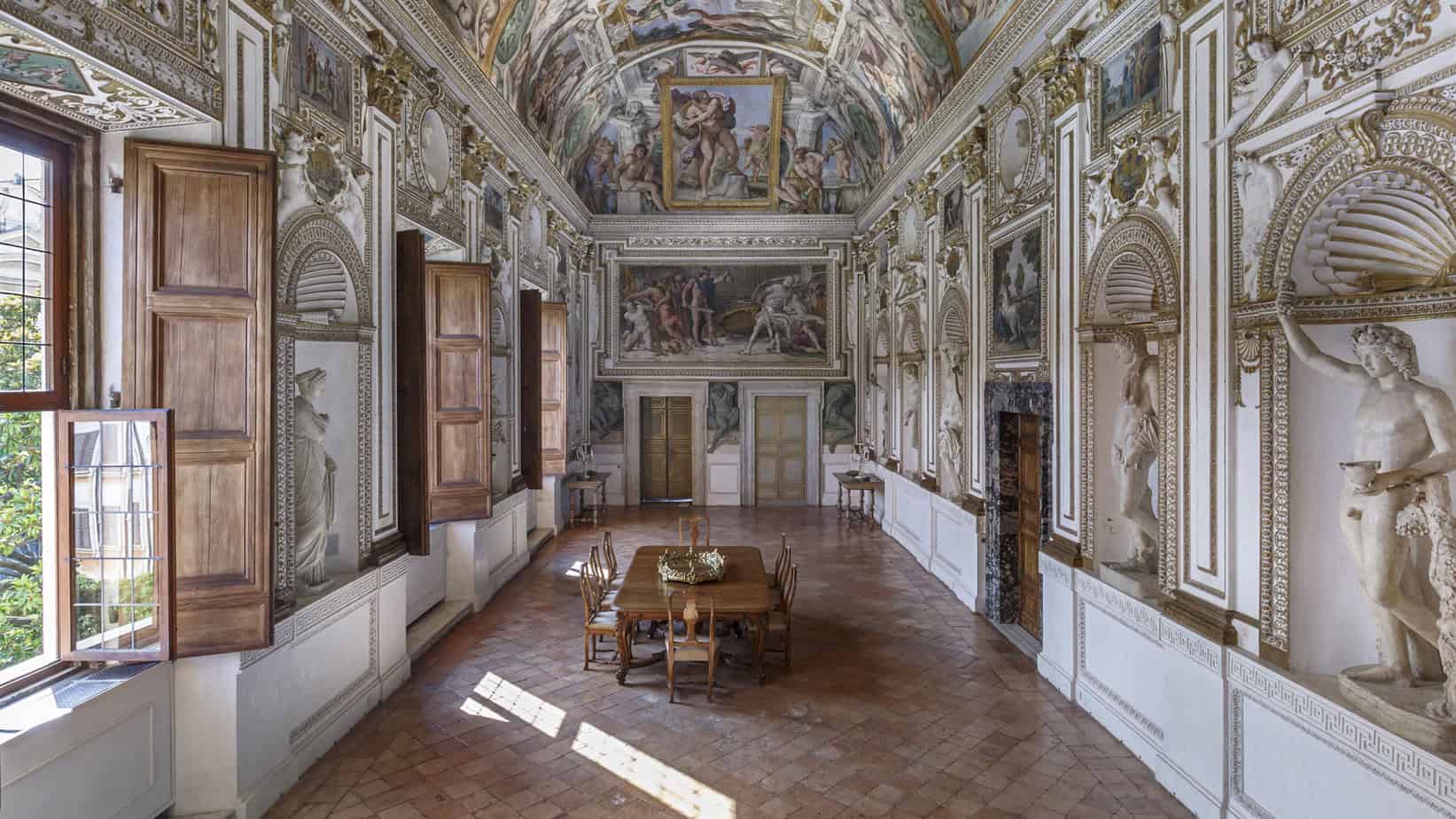
Ever since retiring to Rome in 2014 I’ve wanted to visit. I’d walk by it at least once a week. It’s located in Centro Storico’s Piazza Farnese, maybe Rome’s most underrated piazza, with two huge fountains that are believed to have come from Ancient Roman Baths of Caracalla. The palazzo is ringed with classy cafes and restaurants where well-dressed Romans in designer shades drink Spritz and fine wine at shady outdoor tables.
The palace itself is a three-story yellow block. The second floor has a balcony in the middle above a giant arched front door and below the French flag. It is beautiful in its simplicity.
But you can only see Palazzo Farnese by prearranged tour and every time I checked online, I found an opening – in about six months. Visiting the pope’s bedroom was easier.
As I stayed in Rome while recovering from May 6 hand surgery, I took another shot. I finally scored. When I arrived for my hour-long group tour, the palace looked like an aging French beauty recovering from facial reconstruction surgery. A wooden fence surrounded the base. Scaffolding rose to the roof. The beautiful yellow building face was almost invisible.
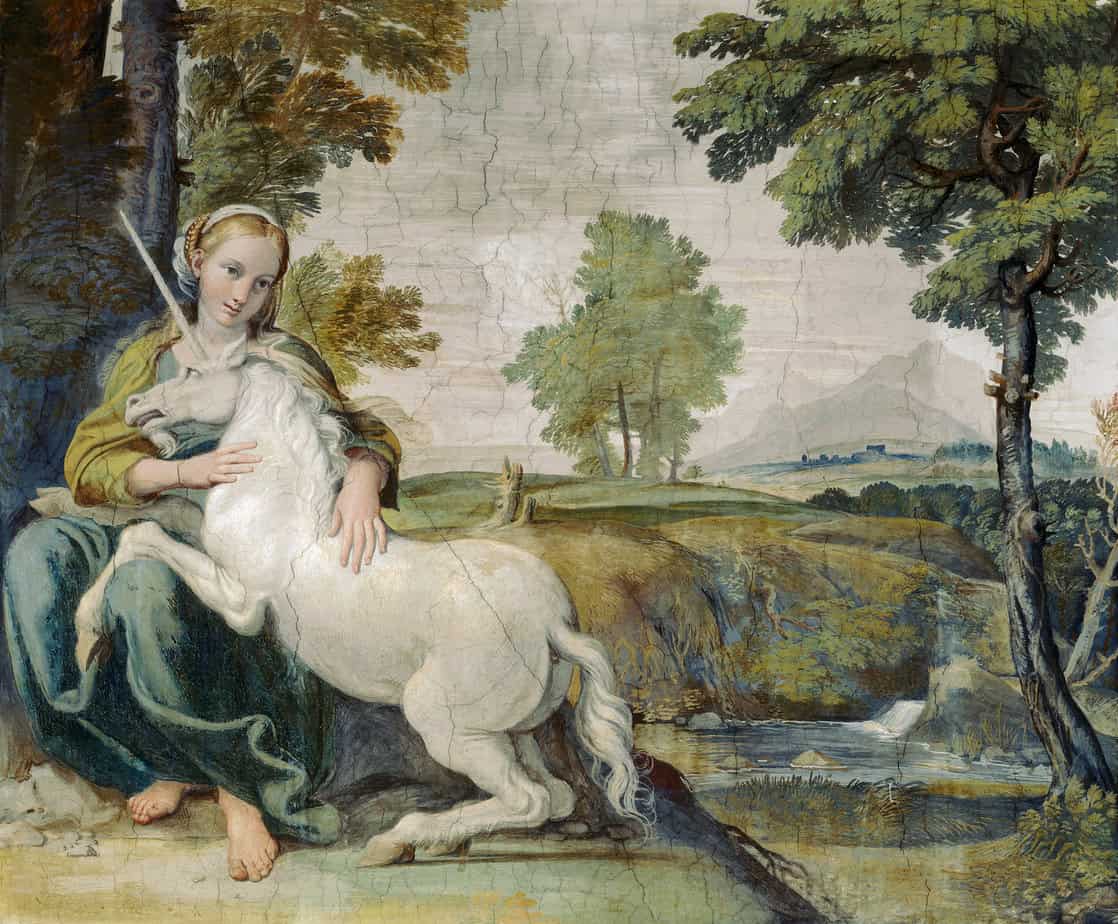
The palace is undergoing a resurfacing started in 2021. She was due. Also, the timing couldn’t be better. Jubilee 2025, a celebration of Catholicism, begins in the Vatican this December. The pilgrims will pour into Centro Storico with near equal numbers to the Sistine Chapel. Palazzo Farnese, called “The Gem of the Roman Renaissance,” had better wear her best face.
However, the true beauty of Palazzo Farnese, like any woman, is inside.
Palazzo Farnese history
Federica Di Folco, our excellent English-speaking guide, took us first into a drab meeting room where she gave us a brief history. In 1468, Alessandro Farnese served in the pope’s military and at 18 years old was sent to Florence on the Vatican fast track. At 25, he became a cardinal – thanks to Giulia Farnese, his sister who was having an affair with Pope Alessandro VI. (No, not all popes were virtuous.)
At the time, the building on the current site was half the size it is now. Alessandro bought it in 1513 and turned it into a Renaissance residence. Alessandro’s status grew and as he made his fortune, he poured some of it into the reconstruction.
He built a beautiful entrance like an ancient basilica. He divided it into naves with ancient Roman columns made of Egyptian granite stolen from Egypt’s Valley of Aswan.
In 1534 he became Pope Paul III and hired the same architect he had supervise the construction of St. Peter’s, a guy named Michelangelo. He worked on it for three years, designing the second-floor windows with the gentle arches over each one. He modified the facade and the second floor.
Federica took us into the entrance and even in the dim light, the Egyptian columns were magnificent, beautiful in their design, powerful in their girth.
In 1549 Pope Paul III died and Michelangelo didn’t like working for his successor, Julius III, and bolted. Giacomo Della Porta eventually completed the palace in 1580.
Federica led us to a courtyard in the back. Just a Frisbee throw from the racket of Campo de’ Fiori and surrounding streets, this backyard was a quiet respite, covered in shady trees.
But it was awfully small. I didn’t expect the Vatican Gardens, which I’ve toured twice and offers such a unique glimpse into life in the world’s smallest republic. But I wasn’t expecting something smaller than what I grew up with in Oregon.
The problem then, as now, is land in this part of Rome was extremely expensive. Also, limiting expansion was the palace borders the Tiber River and Via Giulia, perhaps Rome’s prettiest street. Pope Giulio II had the street commissioned to channel pilgrims to the Vatican across the river.
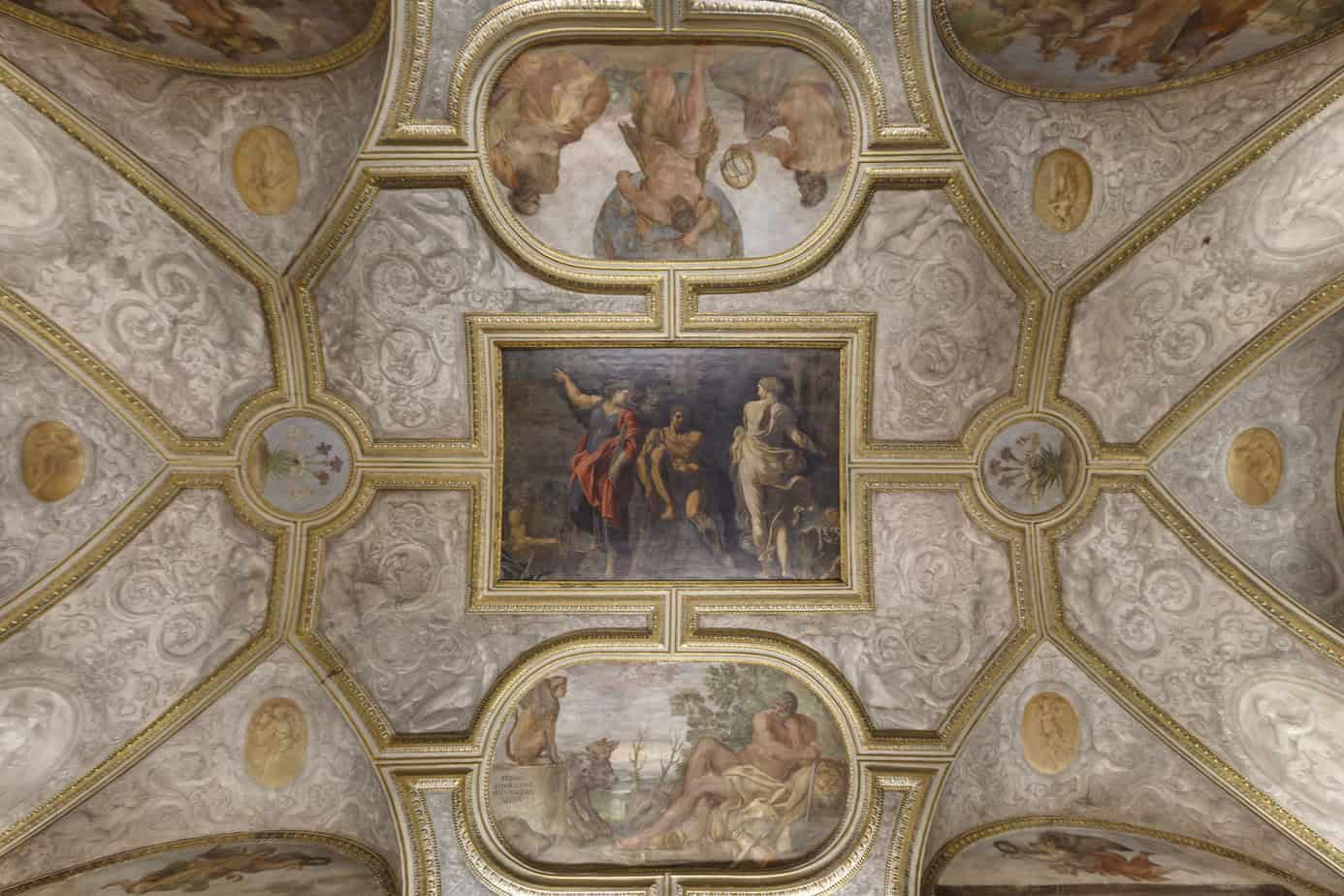
Facts about Palazzo Farnese
Five fun facts you didn’t know about Palazzo Farnese:
- If Pope Paul III had lived longer, today a bridge may span the river from the palace to the beautiful Farnesina Palace which the Farneses had bought. But when the pope died, the “Farnese Island in the middle of Rome,” as Federica called it, lost political backing and died with him.
- This year is the 150th anniversary of the French Embassy moving into the palace. The last member of the Farnese family, Elizabeth Farnese, married Philip of Spain. Their son, Charles, became the King of Naples. He inherited everything, including the palace, He was also a member of the Bourbon family of France. After the unification of Italy in 1861, the Bourbon family lost their rule and moved from Naples to the palace. In 1870, they tired of living under the same Italian king who threw them out of Naples. They moved back to France and in 1874 signed a contract allowing the French government to use their palace as an embassy.
- In 1936, Benito Mussolini bought the palace, valid for 99 years. In 1935, the French and Italians will decide what to do.
- France’s rent of the palace is €1 per year. But it is responsible for all maintenance.
- Michelangelo had the ceiling removed from one room to have walls 18 meters high. The beautiful, elaborately decorated wooden ceiling in the room today is three meters thick. Wooden ceilings in the palace cover 2,000 square meters and the wood comes from the original St. Peter’s which was made of wood and replaced by the current iconic marble church in 1626.
“We say the old one is completely lost, but that’s not true,” Federica said. “Relics of the old basilica are basically stoned into the ceiling we have in here.”
Walking around the room I noticed the floor didn’t match the rest of the palace. It’s new. During the restoration last June, workers removed some unstable tiles and on the back they found symbols of the Fascist Party. When Mussolini bought the palace he placed the symbols on the floor just to remind his followers that every one of their steps is being watched.
The art
As the tour continued, the rooms became more elaborately decorated. One ceiling had a gorgeous fresco of Hercules between two women, one the personification of virtue, pointing up to heaven for all virtuous men. The other woman, beautiful and sensually dressed, is a seductress, and is pointing down, the destination being obvious.
Hercules looks horribly perplexed.
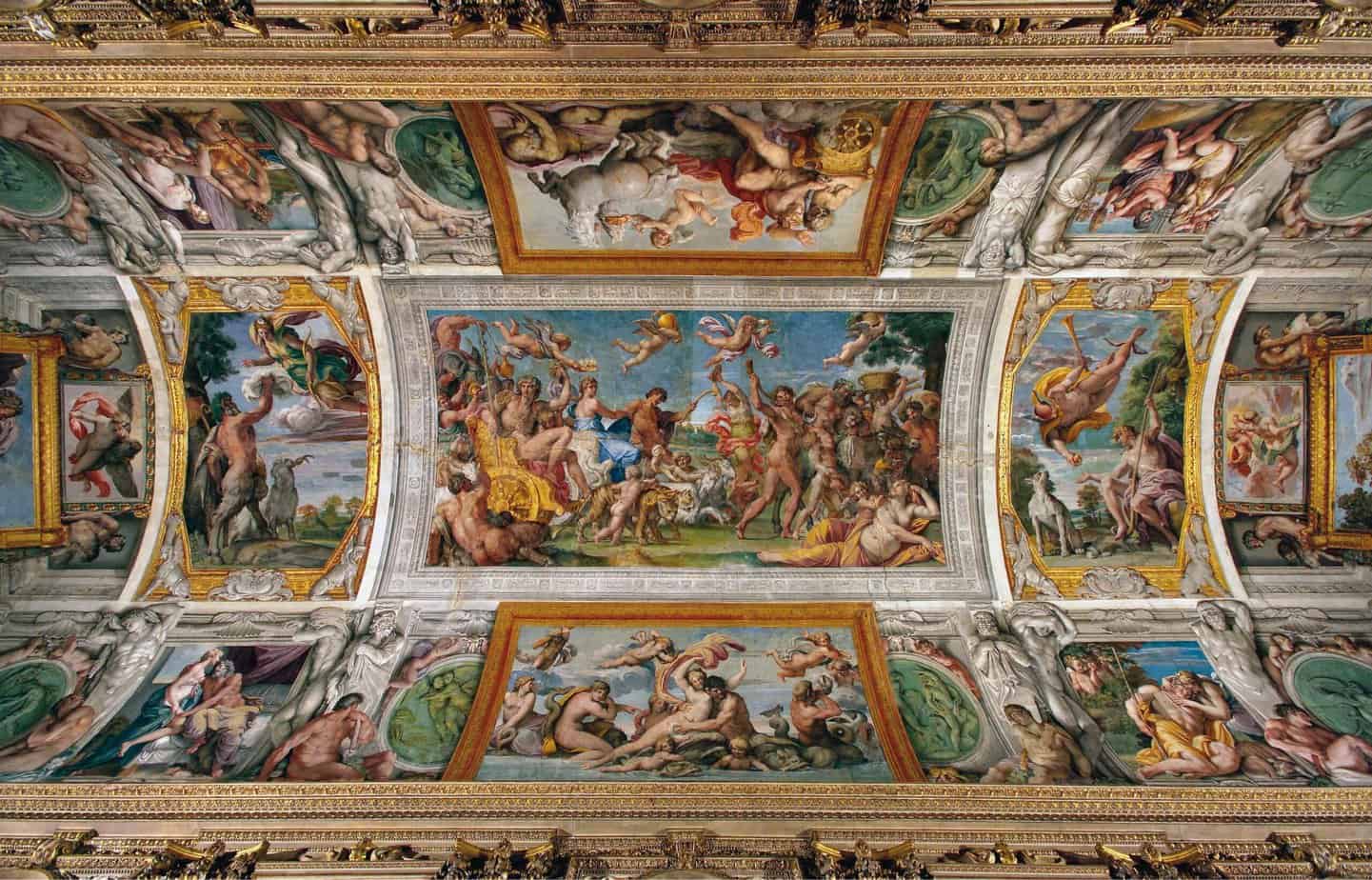
Surrounding it are 16th century frescoes by Bologna artist Annibale Carracci showing people embracing virtues. Hercules is carrying the weight of the universe on his shoulders.The two brothers of Catania during the eruption of Mt. Etna run around trying to save the elderly from the lava.
In another fresco, Ulysses is tied to a boat to prevent him from jumping in the water to join the beautiful Sirens, a path that led to many a sailor’s death.
Carracci also painted “The Triumph of Bacchus,” which adorns another wall. Bacchus, the God of Wine, fell in love with Ampelos, a rare god-mortal mixed relationship.
“Love was so powerful, he put together a god and a mortal woman,” Federica said. “Because love doesn’t care, right?”
I’ve seen the Sistine Chapel and it truly is mesmerizing. You spend so much time looking up, your neck is sore the whole next day. But the art in Palazzo Farnese are remarkable in a more modern realm.
“This became the school for the new generation of artists,” Federica said. “If you want to paint a ceiling, yes, you have to go to the Vatican Museums and see the Sistine Chapel. But you have to go to the Farnese palace because Caracci set the bar a little bit higher.”
If you’re thinking of going …
Palazzo Farnese, https://visite-palazzofarnese.it/?lang=en, 39-06-0608, guided tours in English at 3 p.m., 4 p.m., 5 p.m. Monday and 3 p.m. and 4 p.m. Wednesday and Friday, €15. No photography allowed.


June 19, 2024 @ 11:45 pm
Grazie John,
I am inspired to take the tour and will keep trying to find an available spot. I cannot believe I still haven’t been inside.
Joanna
Melbourne, Australia
June 25, 2024 @ 8:07 am
It’ll be impossible this summer. Look at the fall months.